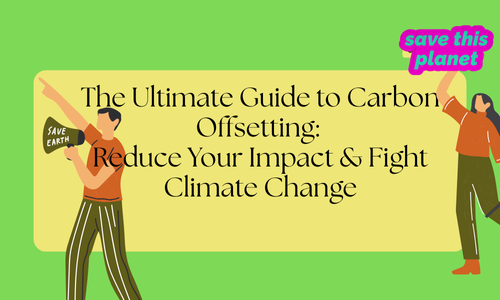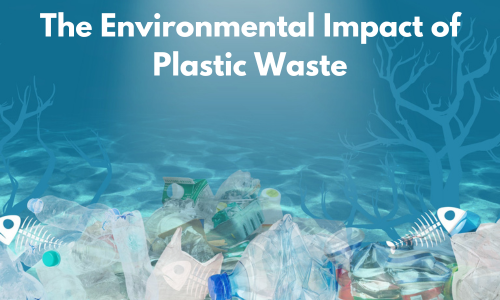This site may contain links to affiliate websites, and I may earn a commission for any purchases made through those links at no additional cost to you.

The Ultimate Guide to Carbon Offsetting: Reduce Your Impact & Fight Climate Change
Climate change is one of the most pressing challenges of our time, and every action we take has an impact—whether positive or negative—on the environment. Carbon offsetting has emerged as a powerful solution that can help reduce the negative consequences of carbon emissions. In this ultimate guide to carbon offsetting, we’ll break down what carbon offsetting is, why it’s crucial, and how you can get involved to make a meaningful difference.
What Is Carbon Offsetting?
Carbon offsetting refers to compensating for the carbon emissions produced by an individual, company, or activity by investing in projects that reduce or capture an equivalent amount of carbon from the atmosphere. These projects can vary from renewable energy initiatives and reforestation to methane capture and carbon sequestration.
While it’s ideal to reduce emissions at their source, carbon offsetting provides a way to mitigate the environmental impact of unavoidable emissions. By contributing to these projects, you’re helping remove or avoid greenhouse gases from the atmosphere, which ultimately works toward fighting climate change.

Why Is Carbon Offsetting Important?
- Mitigating Climate Change
One of the primary reasons carbon offsetting is important is because it helps mitigate the effects of climate change. The increase in greenhouse gas emissions, particularly carbon dioxide (CO2), is a major driver of global warming. By offsetting these emissions, we can slow down the rate of climate change and reduce the severity of its impacts, like extreme weather, rising sea levels, and biodiversity loss.
- Supporting Sustainable Projects
Carbon offsetting doesn’t just negate the damage caused by emissions; it also supports sustainable development. Many offset projects, like tree planting, help restore ecosystems, protect biodiversity, and provide economic opportunities for local communities. So, offsetting is not only about reducing carbon but also about fostering environmental and social well-being.
- Corporate Responsibility & Public Image
For businesses, carbon offsetting is an opportunity to show a commitment to sustainability. Companies that embrace carbon offsets can enhance their reputation and demonstrate leadership in the fight against climate change. Many customers, investors, and employees increasingly demand that companies adopt more sustainable practices, and offsetting emissions is a tangible way to do so.
How Does Carbon Offsetting Work?
- Calculate Your Carbon Footprint
The first step to carbon offsetting is understanding how much carbon you are responsible for emitting. This is called your “carbon footprint.” For individuals, this includes activities like driving a car, flying, using electricity, and consuming goods. For businesses, this involves calculating emissions from operations, logistics, energy usage, and other processes.
Carbon footprint calculators are available online to help you estimate your emissions based on your lifestyle or business operations.
- Choose a Reputable Offset Program
Once you know how much carbon you need to offset, it’s time to choose an offset program. Reputable carbon offset programs invest in projects that reduce greenhouse gases. Look for certifications like the Verified Carbon Standard (VCS) or Gold Standard, which ensure that the projects are credible, measurable, and transparent.
Popular carbon offset projects include:
- Reforestation and Afforestation: Planting trees to absorb CO2.
- Renewable Energy Projects: Supporting the transition to clean energy sources like wind and solar power.
- Methane Capture: Redirecting methane from landfills or agriculture to prevent it from entering the atmosphere.
- Purchase Offsets
Once you’ve selected a program, you can purchase offsets to match your emissions. Offsets are typically sold by the ton of CO2 reduced or avoided. The cost of offsets varies depending on the project and location, but it generally ranges from $5 to $20 per ton of CO2.
You can offset emissions on a one-time basis (such as after a flight) or as an ongoing commitment (such as for annual emissions from energy consumption or business operations).
Types of Carbon Offsetting Projects
- Renewable Energy Projects
Renewable energy projects reduce reliance on fossil fuels by promoting wind, solar, and hydroelectric power. By supporting these projects, you can help displace the use of carbon-intensive energy sources and promote cleaner energy options.
Example: A wind farm project in the Midwest U.S. that generates electricity from wind turbines, reducing the need for coal-fired power plants.
- Reforestation and Afforestation
Trees are natural carbon sinks—they absorb carbon dioxide from the atmosphere through photosynthesis. Reforestation (restoring forests that were cut down) and afforestation (planting trees in areas that were not previously forested) are popular ways to offset carbon emissions.
Example: A reforestation project in the Amazon rainforest, which not only absorbs carbon but also helps preserve biodiversity.
- Energy Efficiency Projects
Improving energy efficiency in buildings, factories, and communities can reduce carbon emissions by using less energy. These projects often involve retrofitting old buildings with energy-saving technologies or providing clean cooking stoves to developing communities.
Example: Installing energy-efficient LED lighting in schools and hospitals to lower energy consumption and carbon output.
- Methane Capture and Waste Management
Methane is a potent greenhouse gas that is 25 times more effective at trapping heat than CO2. Methane capture projects divert methane from landfills, wastewater treatment plants, and agricultural operations, turning it into usable energy and preventing it from entering the atmosphere.
Example: A landfill methane capture system that converts methane into electricity for local communities.

How to Get Started with Carbon Offsetting
- Individual Carbon Offsetting
As an individual, you can offset your carbon emissions by calculating your footprint and choosing a program that aligns with your values. Some common activities you might offset include:
- Travel: Flights, car trips, or even cruises can contribute significantly to your carbon footprint. Many airlines and travel agencies offer carbon offset options when booking your trip.
- Energy Usage: Consider offsetting the emissions from the energy you use in your home, including electricity, heating, and cooling.
- Everyday Life: Your daily activities, such as shopping, food consumption, and waste production, can also be offset by supporting carbon reduction initiatives.
- Corporate Carbon Offsetting
For businesses, carbon offsetting can be a critical component of your corporate sustainability strategy. Start by calculating your company’s total carbon emissions, from offices to transportation and production processes. Then, offset those emissions through certified projects. Many companies offer programs for businesses, helping them manage their offsetting and track progress.
Pro Tip: Businesses can use carbon offsetting as part of a broader sustainability plan that includes reducing emissions through energy-efficient practices, sourcing renewable energy, and promoting sustainable practices within their operations.
Benefits of Carbon Offsetting
- Fighting Climate Change
The most significant benefit of carbon offsetting is its direct contribution to fighting climate change. By supporting projects that remove or prevent carbon emissions, you help reduce the overall concentration of greenhouse gases in the atmosphere.
- Supporting Local Communities
Many carbon offset projects, particularly in developing countries, provide economic and social benefits to local communities. This can include job creation, improved infrastructure, and better living conditions. For example, reforestation projects not only capture carbon but also help improve soil quality, prevent erosion, and provide resources for communities.
- Enhancing Corporate Sustainability
For businesses, carbon offsetting enhances your corporate sustainability initiatives. It demonstrates your commitment to environmental responsibility and can help attract eco-conscious customers, partners, and investors. It also helps you align with international climate goals, such as the Paris Agreement.
Common Misconceptions About Carbon Offsetting
- Offsetting Isn’t a Replacement for Reducing Emissions
While carbon offsetting is an effective tool, it should not be seen as a replacement for efforts to reduce emissions at the source. The most effective strategy is to minimize your emissions wherever possible (e.g., using energy-efficient appliances, driving less, or adopting renewable energy), and then offset any remaining emissions.
- All Offsets Are Not Equal
Not all carbon offset projects are created equal. It’s crucial to choose certified programs that have a proven track record of delivering real, measurable results. Look for third-party certifications like the Gold Standard or Verified Carbon Standard to ensure the offset program you choose is legitimate.
Conclusion
Carbon offsetting is a powerful tool in the fight against climate change. By understanding your carbon footprint and supporting credible projects that reduce or remove carbon from the atmosphere, you can make a meaningful difference. Whether you’re an individual looking to reduce your impact or a business aiming to enhance your sustainability efforts, carbon offsetting offers a way forward to help protect the planet for future generations.




